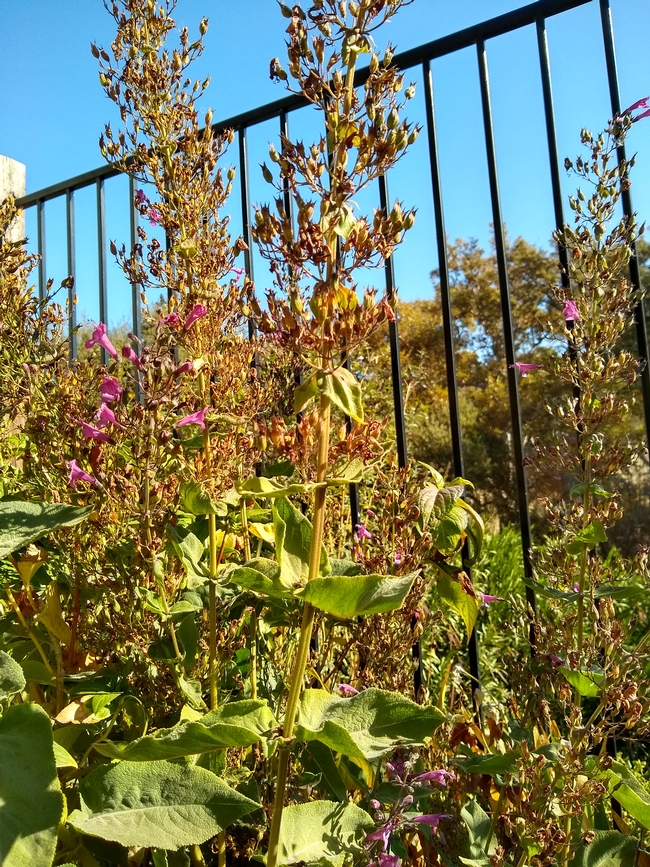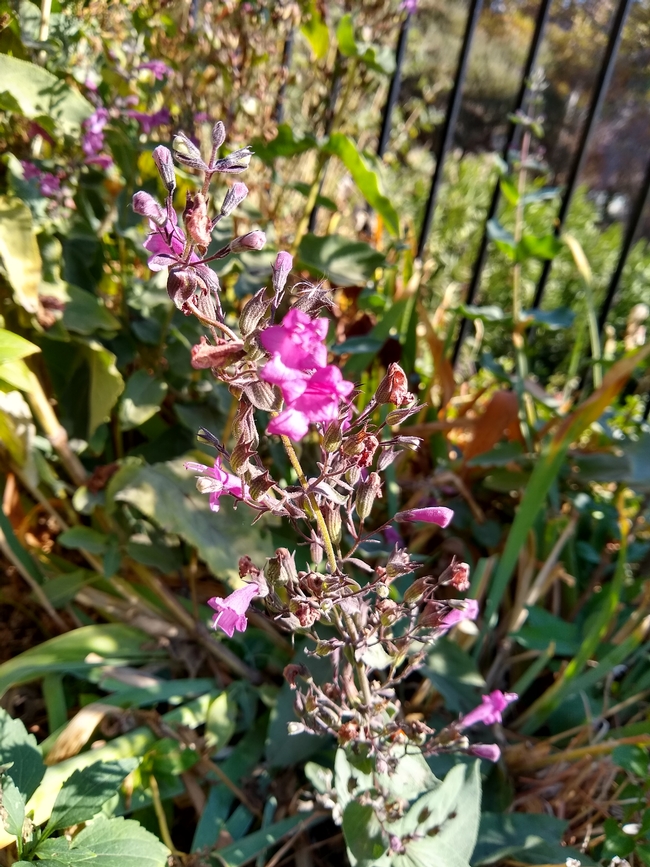Advice for the Home Gardener from the
Help Desk of the UC Master Gardeners
Program of Contra Costa County
Master Gardeners' Help Desk Request: I recently moved into a home in Clayton and am very fortunate to have inherited many beautiful perennials! One, in particular, has stumped me and I was hoping you would be able to help me identify it. I have attached a few pictures.
Along with identifying the plant, I am also curious as to seasonal care. It is obvious the flowers are finished. It is also very large and many have fallen to the ground (the plant isn't able to support itself). Should I cut it way back, deadhead the flowers, etc.?
Growing up in the Midwest, I don't have any experience with perennials in this climate! I am enjoying reading up and learning about the plants in my new yard. I appreciate your time and help on this endeavor!
Response from the MGCC Help Desk: Thank you for contacting the UC Master Gardener Program Help Desk about your unknown perennial. Any plant identification done from a picture must be considered tentative, however, I think that this plant is a Lepechinia sp., and I suspect it is Lepechinia hastata.


Originally looking at your pictures, the plant looks like a salvia. It has broad thick leaves, with well-defined veins. However, most salvias flower on a single stalk and the flowers do not branch as you get to the top of the plant. This branching of the flowers is very prominent in your pictures as is the calyx (the cup that holds the flower on the plant). Lepechinia sp. have very similar leaves to salvias, but can have these branching flowers and a very prominent calyx.
They are in the same family as salvias and are so similar, they are frequently referred to as the false sage or the pitcher sage. There are Lepechinia sp. which are native to California but these seem to have a more drooping carriage. With the upright flowers on your plant, it likely is Lepechinia hastata, a variety that possibly was native to Mexico or Hawaii.
According to the Sunset Western Garden Book, Lepechinia sp. can grow up to 6 feet tall and wide. They require almost no summer water except under the hottest conditions and deer are rarely interested in them. It was difficult to find any clear advice about caring for this plant as it seems to require almost no care. It likes well-draining soil and does not want to be soggy.
A few nurseries recommend deadheading the plant or cutting it back after blooming so it seems reasonable to clean up the parts of your plant that have fallen down. In areas that are warm enough, it might continue to produce some flowers year-round.
Hope this helps.
Best of luck with your new garden
Help Desk of the UC Master Gardener Program of Contra Costa County (SES)
Notes: Contra Costa MG's Help Desk is available almost year-round to answer your gardening questions. Except for a few holidays (e.g., last 2 weeks December), we're open every week, Monday through Thursday for walk-ins from 9:00 am to Noon at 2380 Bisso Lane, Concord, CA 94520. We can also be reached via telephone: (925) 608-6683, email: ccmg@ucanr.edu, or on the web at http://ccmg.ucanr.edu/Ask_Us/. MGCC Blogs can be found at http://ccmg.edu/HortCoCo/ You can also subscribe to the Biog.